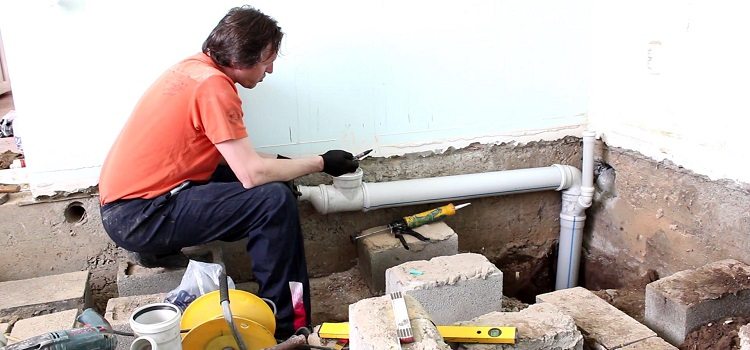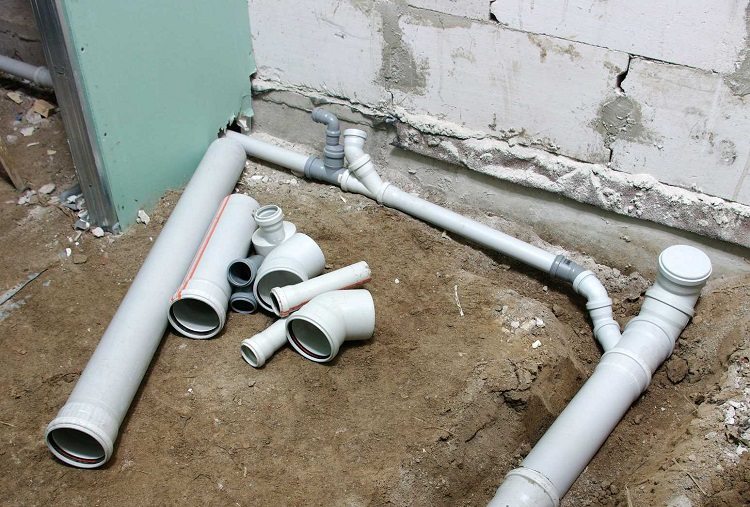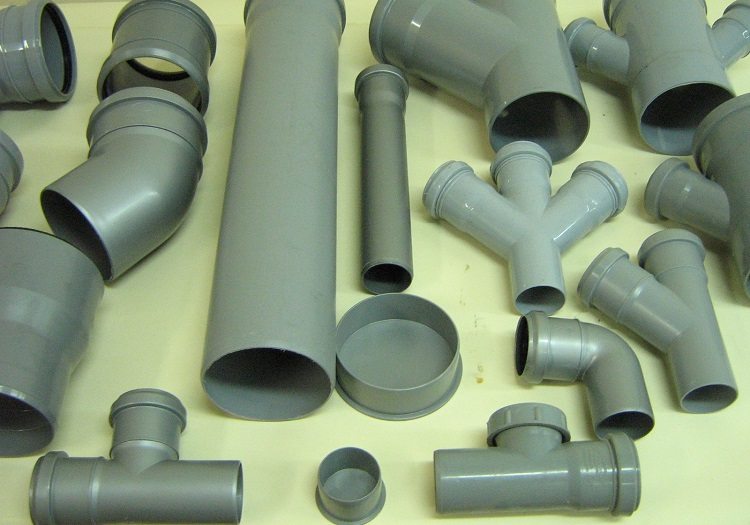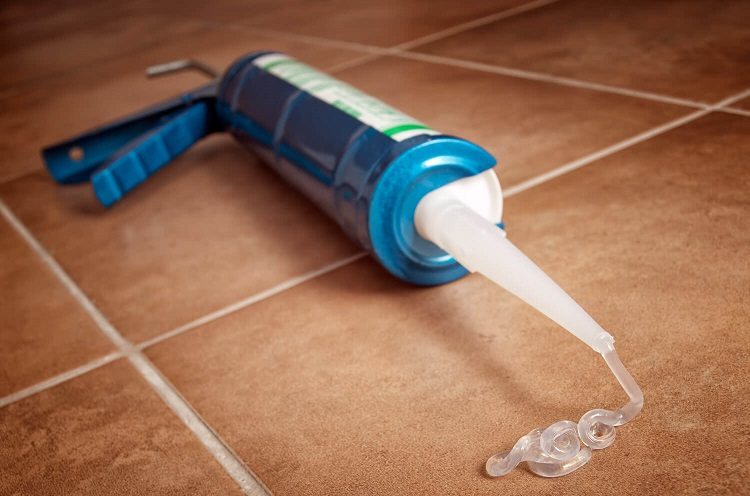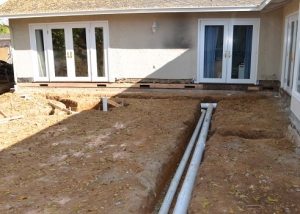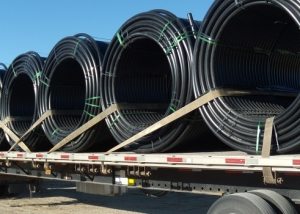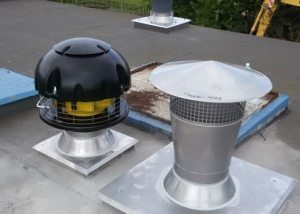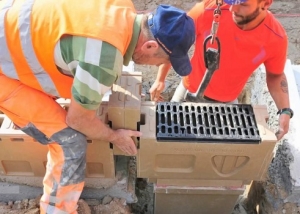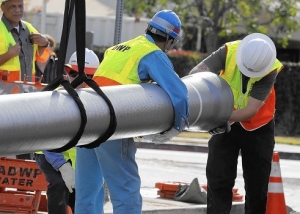Replacing sewer pipes is a very responsible and in some cases even dangerous work requiring knowledge of the system design. You can do it yourself, but it is better to turn to professionals for help. In order to correctly change the pipes, the following sequence is observed: the old pipeline is dismantled; buildings that interfere with repair are removed; pipes are laid, fixed; plumbing is connected; tightness of connections is controlled.
Content
Preparatory work for the replacement of the pipeline
Before changing the sewer pipes in an apartment, you need to pay attention to such rules:
- compliance with the slope of the sewer pipes to the riser;
- compliance with the tightness of the assembly;
- pipes are fixed to the walls with clamps.
Sewerage device involves maintaining in the riser pressure higher than atmospheric. Otherwise, unpleasant, sometimes explosive, odors from the system will accumulate and enter the apartment. In addition, when replacing sewer pipes to prevent the occurrence of blockages or the inability to outflow of fluid, a certain bias is observed. Its norms depending on the diameter of the pipes are given in the table.
| Pipe diameter mm | 50 | 110 | 160 | 200 |
| Minimum slope, mm / m | 30 | 20 | 8 | 7 |
The maximum slope should be less than 150 mm / m. This requirement does not apply to plumbing fixtures in an apartment less than one and a half meters long.
Important! If the pipes are installed in a vertical plane, then a connection at an angle of 90 ° is permissible.
When replacing sewer pipes in an apartment with your own hands, it is important to ensure the tightness of all connections, to prevent the appearance of kinks and distortions. The most common mistakes when installing a new riser on your own are: incorrect selection of pipe sizes, grades and materials, failure to comply with the basic rules for installation work.
Types and sizes of pipes used
Before you change the sewer pipes in the apartment, you need to draw up a diagram of the planned sewer system. This will determine the type, size, number of pipes and fittings, other necessary parts and elements. To replace the risers in the apartment, you can also use plastic sewer pipes, for this you need to purchase large diameter products. Cast iron sewer pipes are used much less frequently.
Plastic pipes for sewage polyethylene PVC and polypropylene. Polyethylene is one of the cheapest and is easy to install, but prone to deformation and unstable to high temperatures. PVC pipes have the smallest hydraulic resistance. The disadvantage of using such pipes to replace sewers in the apartment is not very good chemical resistance and strength, which imposes restrictions on the methods of cleaning them.
Polypropylene is considered the most expensive, but at the same time heat-resistant, durable and reliable. To implement bathroom wiring and the apartment, as well as connecting plumbing fixtures (except for the toilet), PVC pipes with a diameter of 5-7 cm are used. For connecting the toilet, it is better to take a corrugated pipe with a diameter of 10-15 cm. A smooth pipe of the same diameter is suitable for a riser.
Necessary materials and tools
To replace sewer pipes in an apartment, the following materials and tools may be required:
- bends, connecting fittings, tees;
- pipe clamps;
- sealing gum and cuffs for sealing joints;
- silicone sealant;
- riser revisions;
- drill or puncher, hacksaw, adjustable wrenches, chisel, hammer, screwdrivers and other tools.
In addition, you will need a tape measure, level and a pencil or marker for drawing markings on the walls. The correct selection of the diameter and material for the pipes when replacing the sewer riser in the apartment affects the operational characteristics and the efficiency of the system.
Helpful advice! When doing the work yourself, it is better to use pipes and materials from one manufacturer, which will avoid difficulties with size mismatch during installation.
The diameter of the corrugated siphons for washing and bathing can be 5 cm, 4 cm and 3.2 cm; for a washing machine - 2-2.5 cm. The diameter of the adapter cuff used for the toilet is 12.6 / 11 cm. The pipes through which the water is drained from the washing machine should be raised above the floor by 50 cm.
The order of work to replace the sewer
Replacement of sewage pipes is carried out in the following order:
- If necessary, in the installation or reconstruction of additional plumbing fixtures, the place of their installation is first determined.
- A sewerage wiring diagram is drawn in a house or apartment, on which the location of the pipes, the distance between them, the dimensions and sections of the slopes are indicated.
- A method is being selected for dismantling the old riser and other sewer pipes in the apartment, which must be changed.
- The required amount of materials and components is bought: couplings, pipes, fittings etc.
- Try on pipes with fittings.
- Dismantled old equipment.
- A new pipeline is installed and adjusted locally.
- Is produced joint sealing.
- The necessary plumbing fixtures are installed and connected.
- The system is connected to the ventilation riser.
After the sealant hardens, the pipeline is checked for leaks.
Dismantling the old system and riser
Do-it-yourself replacement of the sewer riser occurs in stages, in compliance with all safety rules. Before changing the sewer pipe, it is necessary to shut off the cold and hot water supply.
Next, all plumbing fixtures located nearby the work site are disconnected, which will prevent their damage during the installation of the riser. To release access to old pipes, which are planned to be replaced, it is often necessary to break a cement screed.
The most difficult and time-consuming stage is the dismantling of the cast-iron riser. In the pipe, a grinder produces cuts at a distance of 60 cm from the tee up and 10 cm from the ceiling down. Each of them should occupy approximately half the diameter of the pipe. A chisel is installed in the place of cuts and a few blows are made to it with a hammer. Changing the riser is better than not one, because when it bursts, help will be required in holding the pipe.
After removing the riser, the tee is carefully removed, carefully rocking it and releasing it. At the last stage, the pipe socket is cleaned of dirt and the rest of the system is disassembled. Before installing a new cuff on the socket, carefully remove all residual grease. They can subsequently reduce the quality of the new sewer system.If plastic pipes are removed, they are removed section by section by swaying.
Installation of new sewer pipes
After the dismantling of the old sewer system and the necessary preparatory work are completed, new pipes can be installed. First, a cross or tee is installed. A rubber sleeve lubricated with sealant is inserted into the lower bell. A pipe of the required diameter is inserted into the tee. Fixation of the riser to the wall is carried out by clamps in at least four places. Next, the seals in the joints and the tightness of the system are checked.
Important! Modern plastic pipes are very noisy when drains move along them, so you should take care of sound insulation after installing them.
Replacement of sewer pipes at the periphery is carried out after installation of the riser. Change pipes in the direction from the bottom up. All bells of the new pipeline are arranged towards the flow of water. Using a ruler and a square on the wall, a line is laid for laying new pipes with a slope of 5 ° to the riser or about 20-25 mm per linear meter. Further, pipes are attached to the wall with clamps, and plumbing fixtures to them. All connections are made using rubber cuffs.
Thus, you can change the pipeline in the apartment yourself. This will not affect the life of the sewer system if you use high-quality materials, tools and follow all the necessary rules.
